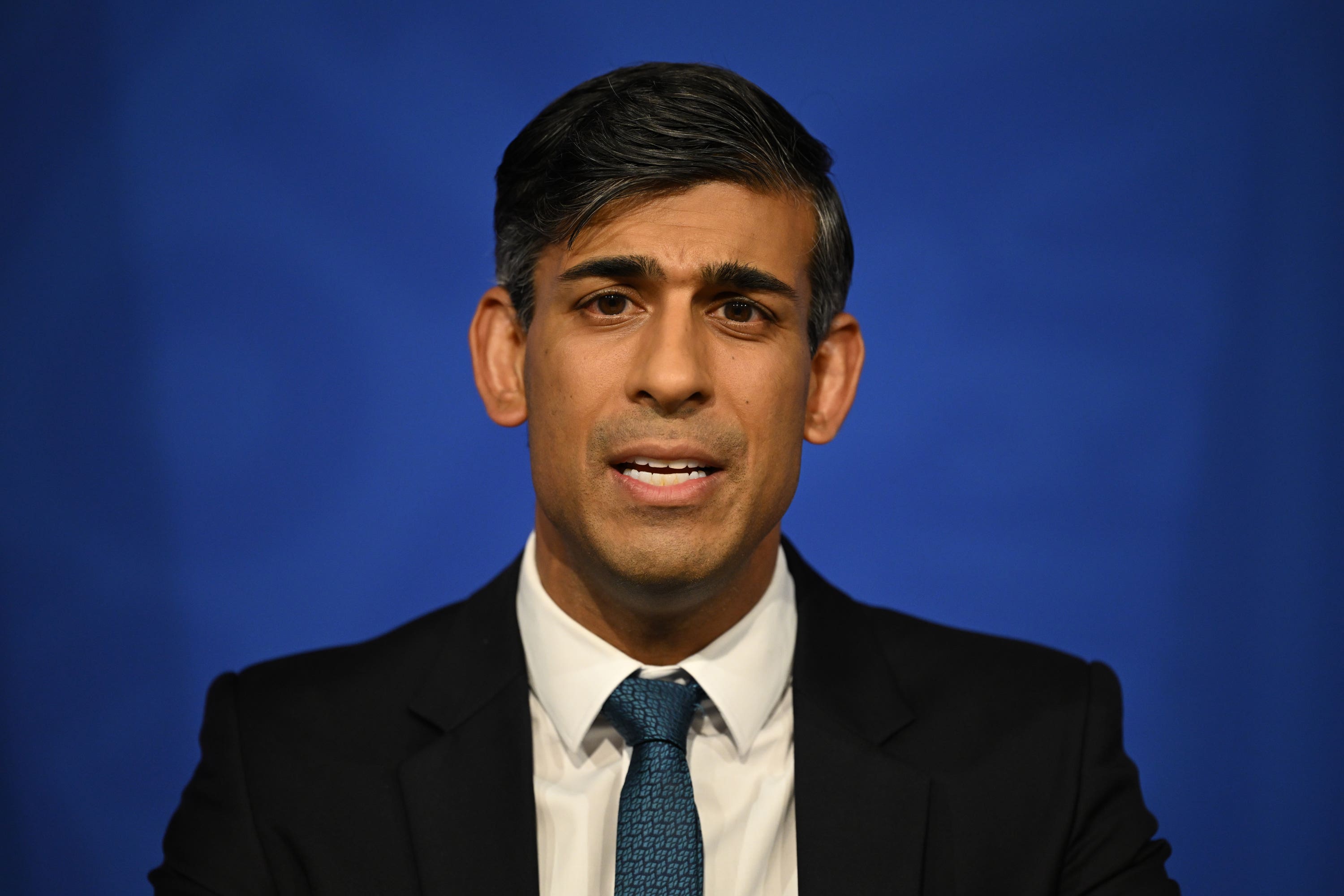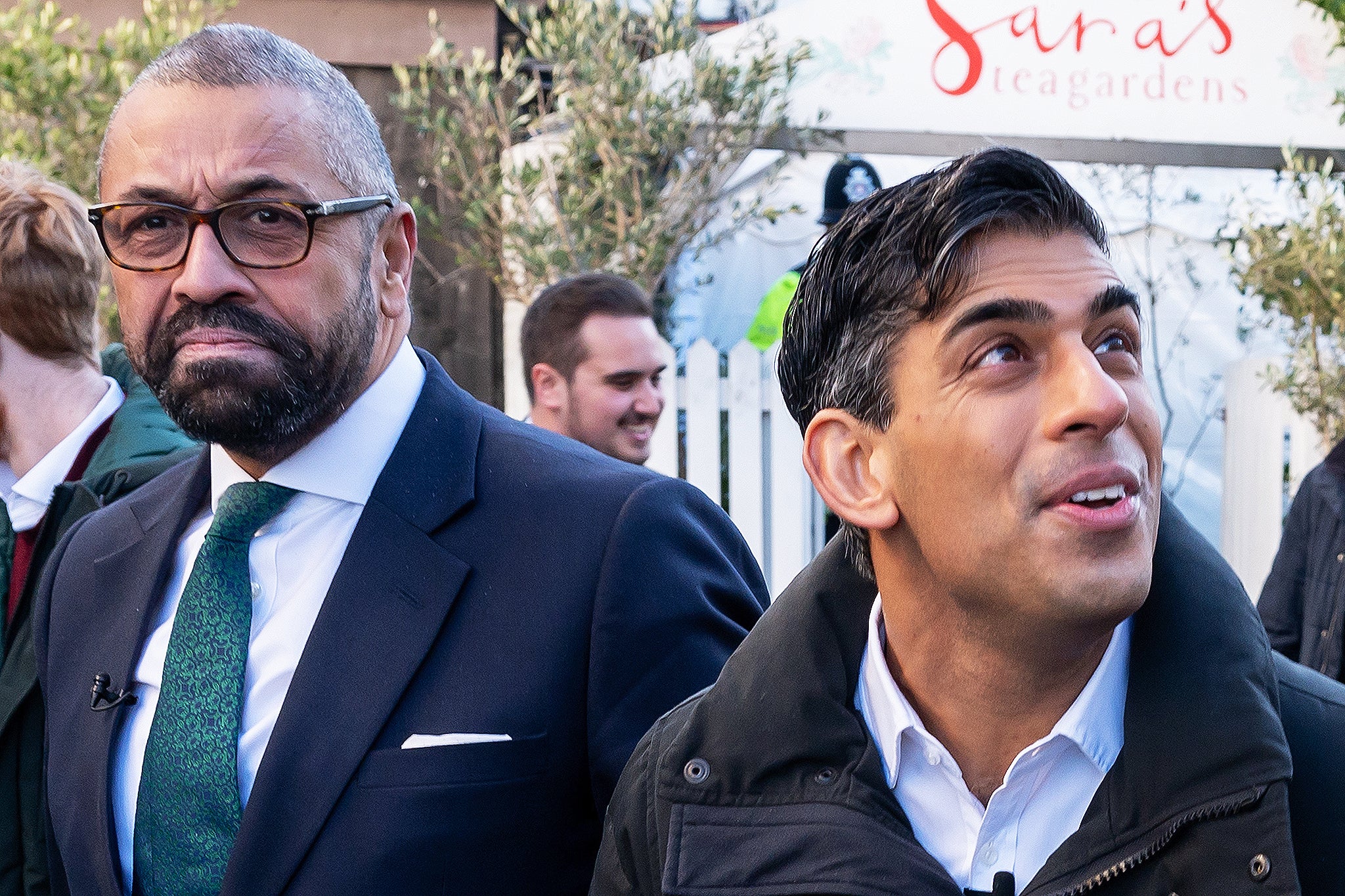Does the latest dire opinion poll mean it’s all over for the Conservatives?
As a new survey by YouGov puts Labour a shocking 27 percentage points ahead of the Tories, Sean O’Grady asks whether Rishi Sunak should take it seriously – and if so, what happens next


The latest YouGov public opinion poll has caught some attention as it shows that the Tories are supported by a mere 20 per cent of voters. This is the lowest showing since Rishi Sunak took over from Liz Truss at a time when her dismal performance had forced her out after 49 days in office. Thus, to borrow one of Sunak’s current catchphrases, the party is back at square one – and the Sunak bounce has now disappeared.
The Labour Party, at 47 per cent, thus enjoys a commanding lead of near-unprecedented proportions in recent times. But of course, this is only one poll, and it stands in contrast with another one earlier this week that put the Labour lead at a (relatively) vulnerable 13.5 percentage points. Also, things might change by the next election, and the voters are volatile. That said, some things are fairly clear even now...
How bad is it for the Tories?
Take your pick from some horrific prospects. A 27-point lead, on a fairly rough-and-ready calculation, could conceivably leave them in third place behind the Liberal Democrats in the House of Commons, and thus Sunak (or the Tory leader after him) wouldn’t even qualify as leader of the opposition – the role would fall to Ed Davey (or possibly Layla Moran – politics is full of surprises).
Only those in the very safest seats would be eligible to run for leader, which would mean, in this doomsday scenario, James Cleverly and Liz Truss, with the likes of Suella Braverman, Kemi Badenoch and Michael Gove touch-and-go to get elected. The present governing party would also lose numerous deposits, and would effectively go from endangered to extinct in places like Liverpool and large chunks of Birmingham and London.
Among the young (18-24), the Tories score a scarcely believable 4 per cent, and that only rises to a depressing 10 per cent among the under-50s. The only age group where the Tories lead are the over-65s, and even then only by 36 per cent to 29 per cent for Labour, with Reform UK on 20 per cent. Geographically, their weakest region is London (on 15 per cent – the Labour lead there is 42 per cent), and they are weakest among female voters.

Recent research suggests that the traditional pattern whereby voters move to the right as they get older is no longer operating as strongly, which makes the prospect of a rapid Tory recovery fairly fanciful – especially if the party lurches to the right in opposition.
This year, the Tories could go down to their worst defeat since 1832, when they were led by the Duke of Wellington – and then make things even worse for themselves.
Why so bad?
Apart from a sense of ennui, a mixed track record, policy failures, sleaze, the housing crisis, declining public services, high taxes and some obvious internal divisions, the Tories’ widespread unpopularity is exacerbated by a combination of specifically electoral factors. These include a trend to anti-Conservative tactical voting by Liberal Democrat and Labour voters on a scale not seen since 2001; the Labour revival in Scotland after a long period of SNP ascendancy; the intervention of Reform UK peeling away the more traditional/older Conservative supporters; and an unusually large number of fed-up Tory abstentions.
The recent redrawing of constituency boundaries was a rare positive for Sunak, but it only adds an advantage of about seven seats – net – which will make no difference in a landslide.
Why the difference with the big poll at the start of the week?
Techniques and assumptions. The mega-poll published earlier in the week suggested that the Tories were indeed well behind Labour, but the gap, at first sight, appeared a bit less hopeless. Labour, on 39.5 per cent, would actually be scoring a little lower than Jeremy Corbyn did in the 2017 general election – the one in which Theresa May lost her majority. The Tories’ rating, at around 26 per cent, also seemed more in line with other polls, albeit still representing a defeat of historic proportions.
The difference in lead and the relative standing of the two parties can be explained mainly by the fact that the two polls were doing different things. The one earlier in the week was focused on marginal seats and modelling the outcome in the House of Commons, and thus used those results to “work backwards” to create a conventional poll result with a standard national sample. More important still, the earlier poll made assumptions about how ex-Tory voters who now say they won’t vote might return to their 2019 allegiance as polling day draws closer.
The later poll mostly disregards these voters in that respect. Hence the appearance of the Tories doing a bit better – but they can’t then make the argument that their 26 per cent in the earlier poll would be boosted by the disaffected returning to the fold, because that is already accounted for.
So the two polls are in fact fairly consistent, and broadly in line with recent trends, which have seen the Conservatives, and especially Sunak himself, slipping.
Can the Tories be saved?
Probably not. A mighty 40 per cent of voters in the latest poll say they wouldn’t vote Conservative under any circumstances, but it’s fair to add that 27 per cent would be encouraged to do so if NHS waiting lists came down, and slightly smaller proportions would be more likely to opt for the Conservatives if they “stopped the boats” and improved the economy.
Given that interest rates and inflation should come down this year, and tax cuts look certain, there could be a bit of a recovery. Equally, the party could fall into civil war and the country could slip into recession.
What about the Rwanda plan?
What about it? No doubt getting planeloads of refugees off to Kigali would make the policy seem successful and be a personal vindication for the prime minister. Yet such are the depths of Sunak’s ratings on the immigration issue, it’s hard to see it transforming anything.
Some 71 per cent of all voters don’t trust Sunak on immigration, against a mere 19 per cent who do – a net deficit of minus 52 per cent. Starmer doesn’t do that much better, at minus 35 per cent; the surprise is that neither does Nigel Farage – at minus 31 per cent. It suggests that the electorate have made their minds up that, like it or not, none of their putative political leaders have got the answers. They’re right, too.





Join our commenting forum
Join thought-provoking conversations, follow other Independent readers and see their replies
Comments